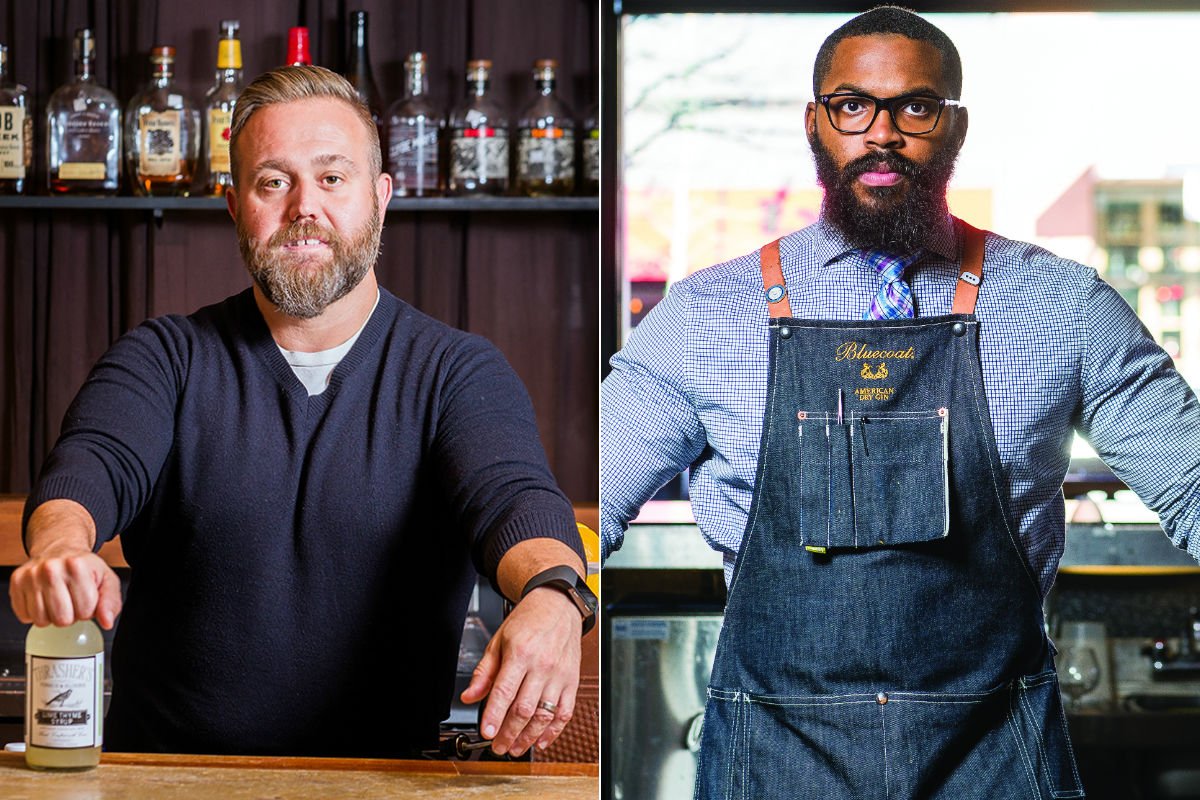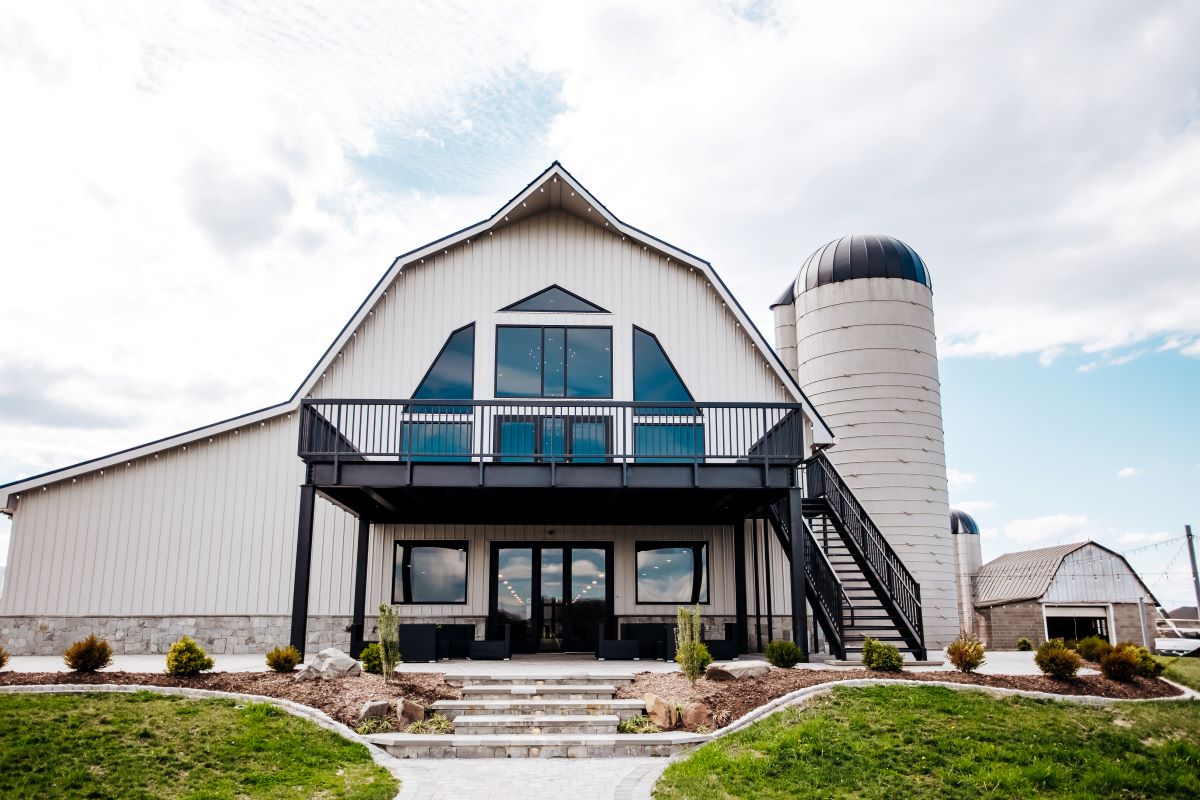
Back in the day, bartending was considered a part-time gig, the go-to drink-maker was Mr. Boston, and the only thing accompanying any given long pour was ice—and we’re not talking hand-shaved cubes fashioned from artisanal water.
“Thirteen years ago when we opened Restaurant Eve, fine dining was two glasses of champagne, dinner and maybe an after-dinner drink,” says Todd Thrasher, managing partner at Eat Good Food Group. “There was no cocktail scene.”
Nowadays, microbreweries such as Caboose Brewing Company keep barrel-aged, artisan root beer-spiked cocktails handy. And the general public is so steeped in alcohol appreciation that even Thrasher, who oversees multiple bars including 10-year-old PX, occasionally gets stumped.
“Somebody came in the other day and asked for a Fitzgerald. I don’t even know what a Fitzgerald is,” he says.
Thrasher has played a pivotal role in the drinks revolution. When PX started, the speakeasy-style bar just began to come back in vogue. Now, a few blocks away from PX in Old Town Alexandria, there’s a speakeasy inside of a doughnut shop (Captain Gregory’s in Sugar Shack).
“I would steal flavors from the kitchen,” he says of the cues he took from chef José Andrés at since-shuttered Café Atlántico in Washington, D.C.
Once he paired up with restaurateur Cathal Armstrong, Thrasher said he made it his mission to distill whatever the kitchen was preparing into a glass. That drove him to spend six months perfecting a housemade tonic (which you can buy at Society Fair) after experiencing bitter notes in a papaya salad.
He likewise began making his own bitters out of necessity.
Although the Angostura brand was useful, the medicinal taste was limiting. “If I wanted to create a cocktail with peach bitters, where would I get that from?” Thrasher says. Eve currently stocks over a dozen custom concoctions, including agave-based bitters and a lemon-lime-flavored elixir.
Jeremy Ross, general manager and beverage director at Sense of Thai St., is another fork-to-tumbler evangelist.
An alumnus of the Knightsbridge Restaurant Group, Ross mimicked what former Oval Room chef Tony Conte sent out on the plates. “Everything he did with food I found a way to do with drinks,” Ross says.
He’s carrying on that tradition with a bar program featuring unadulterated spirits, fresh ingredients and custom flourishes. “We don’t do simple syrup. We do seasoned syrup,” he says. (Think salt- and spice-based infusions rather than sugar.)
But bringing suburbanites up to speed still requires work.
“In Virginia, people are like, ‘Give me a vodka cranberry.’ That is such a waste of your time,” Ross wishes he could tell his older clientele.
Taha Ismail, a partner at Mike Isabella Concepts, can relate to the culture shock. He’s found those pouring into the Arlington outposts are “a little bit more conservative” about hard liquor. According to Ismail, vodka and bourbon remain top-sellers, though consumers are branching out even within those limited spheres.
“People have moved on from Johnny and Jack,” he says. He is also pleased to see mixed drinks being enjoyed throughout the meal rather than in isolation.
“There is a majority of people who come in and stick with cocktails,” Ismail says.
He’s hoping to stoke that trend by offering even more opportunities for experimentation. That outreach includes instituting Tiki Thursdays at Pepita Cantina, whipping up daily specials laced with mezcal (“It’s smoky; it’s light,” Ismail gushes), brandy and aquavit and possibly carving out time for interactive cocktail classes.
“We’ve always been aware of the fads, but we’ve never chased them,” says Jon Norton, CEO of Great American Restaurants, on his traditional approach to filling barstools. “Consistency is a big thing for us.”
Although he keeps tabs on the swanky speakeasies and high-end bar programs cropping up all around, Norton says GAR has succeeded thus far by keeping things simple.
“We’re not going after the guests who have $20 cocktails,” he says. “We want people to be able to enjoy a cocktail any time, not just as a treat.”
Thrasher echoes the paradigm of generosity.
“I think the next big thing in bartending should be hospitality. Just be nice to people,” Thrasher says.
Dealer’s Choice
Trump Card or Crapshoot?
In Jeremy Ross’ mind, dealer’s choice is one of the best ways to connect with bar patrons.
“Tell us what you like and we’ll make something that you love” is how the general manager and beverage director of Sense of Thai St. described the trust-building exercise wherein consumers toss out a few personal preferences and allow drink-makers to fill in the blanks.
Taha Ismail, a partner at Mike Isabella Concepts, says Northern Virginians have taken a shine to the bilateral brainstorming.
“They want to test us,” he says, noting some customers report back about recreating the spontaneous productions crafted at Isabella joints.
Todd Thrasher can’t stomach any of it.
“I think it’s a trend that should stop,” the veteran mixologist and aspiring distiller says. (His rum distillery and tiki bar, Potomac Distilling Co., is set to open on the D.C. waterfront.)
Thrasher says he encourages trainees to discuss ideas, play around with recipes, refine initial efforts and repeat the process as much as needed before placing a new cocktail in front of a guest. He also insists they hone the procedure so every other bartender on staff can replicate the intended result without fail, lest obvious inconsistencies dilute client satisfaction.
Rather than engendering creativity, Thrasher views dealer’s choice as a recipe for disaster, particularly if the individual filling the free-form order lacks the proper perspective.
“You’re asking a lot of a kid, whose palate probably isn’t fully developed yet, to make you something off-the-cuff,” Thrasher says. “How many people can really do that? I don’t know that I can do that.”


